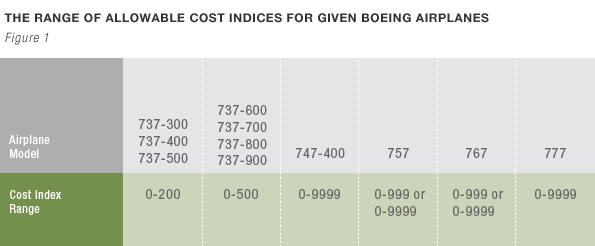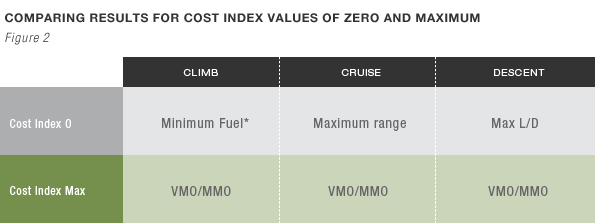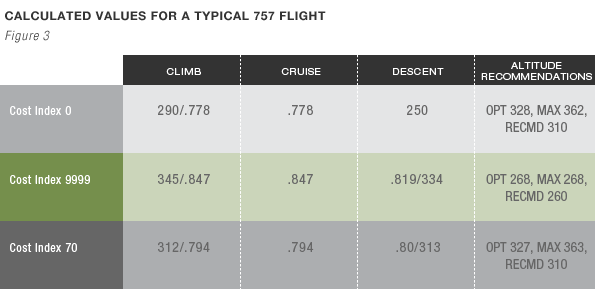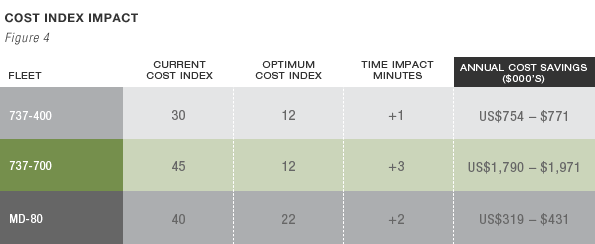
COST INDEX USAGE
In practice, neither of the extreme CI values is used; instead, many operators use values based on their specific cost structure, modified if necessary for individual route requirements. As a result, CI will typically vary among models, and may also vary for individual routes.
Clearly, a low CI should be used when fuel costs are high compared to other operating costs. The FMC calculates coordinated ECON climb (see fig. 5, on next page), cruise, and descent speeds (see fig. 6, on next page) from the entered CI. To comply with Air Traffic Control requirements, the airspeed used during descent tends to be the most restricted of the three flight phases. The descent may be planned at ECON Mach/Calibrated Air Speed (CAS) (based on the CI) or a manually entered Mach/CAS. Vertical Navigation (VNAV) limits the maximum target speed as follows:
- 737-300/-400/-500/-600/-700/-800/-900: The maximum airspeed is velocity maximum operating/Mach maximum operating (VMO/MMO) (340 CAS/.82 Mach). The FMC-generated speed targets are limited to 330 CAS in descent to provide margins to VMO. The VMO value of 340 CAS may be entered by the pilot to eliminate this margin.
- 747-400: 349 knots (VMO/MMO minus 16 knots) or a pilot-entered speed greater than 354 knots (VMO/MMO minus 11 knots).
- 757: 334 knots (VMO/MMO minus 16 knots) or a pilot-entered speed greater than 339 knots (VMO/MMO minus 11 knots).
- 767: 344 knots (VMO/MMO minus 16 knots) or a pilot-entered speed greater than 349 knots (VMO/MMO minus 11 knots).
- 777: 314 knots (VMO/MMO minus 16 knots) or a pilot-entered speed greater than 319 knots (VMO/MMO minus 11 knots).
FMCs also limit target speeds appropriately for initial buffet and limit thrust.
Figure 3 illustrates the values for a typical 757 flight.


Entering zero for the cost index results in maximum range airspeed and minimum trip fuel.
Entering the maximum value for cost index results in a minimum time speed schedule.
* Minimum climb contribution to trip fuel; this is different from minimum fuel to cruise altitude.


